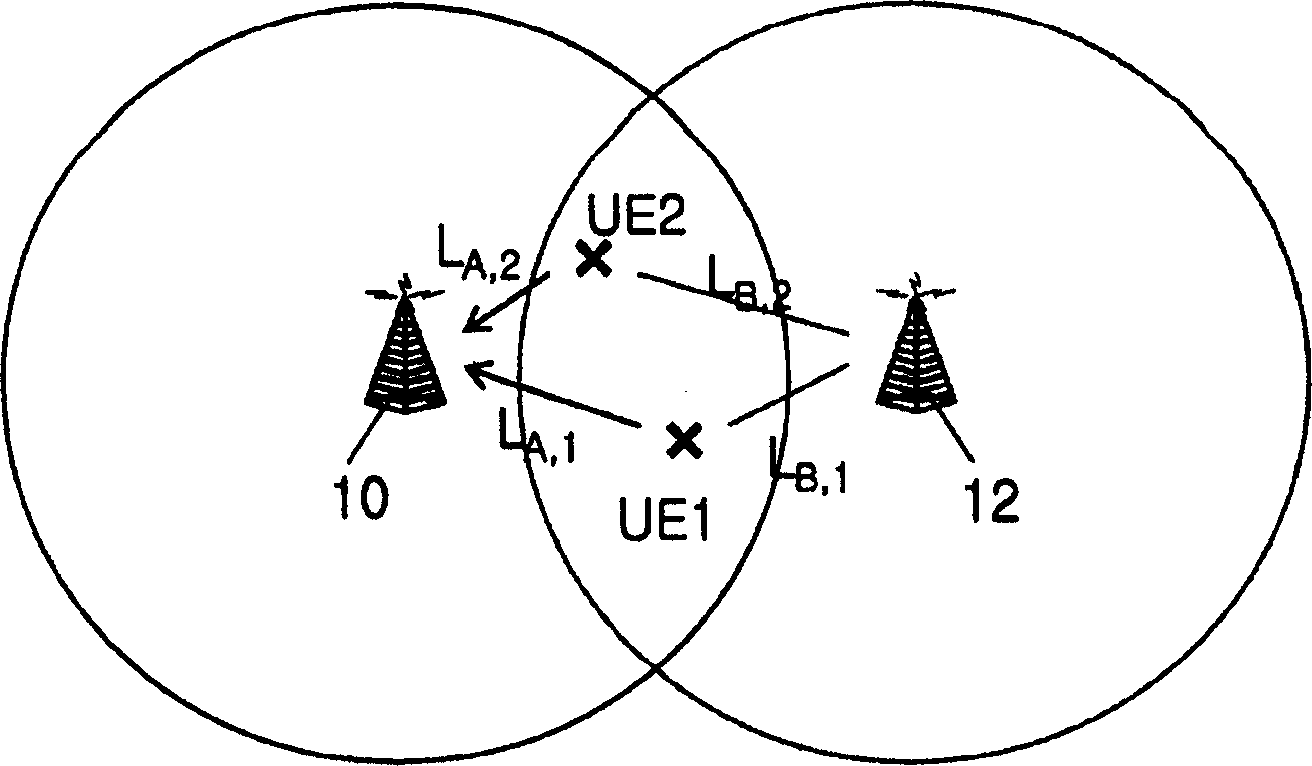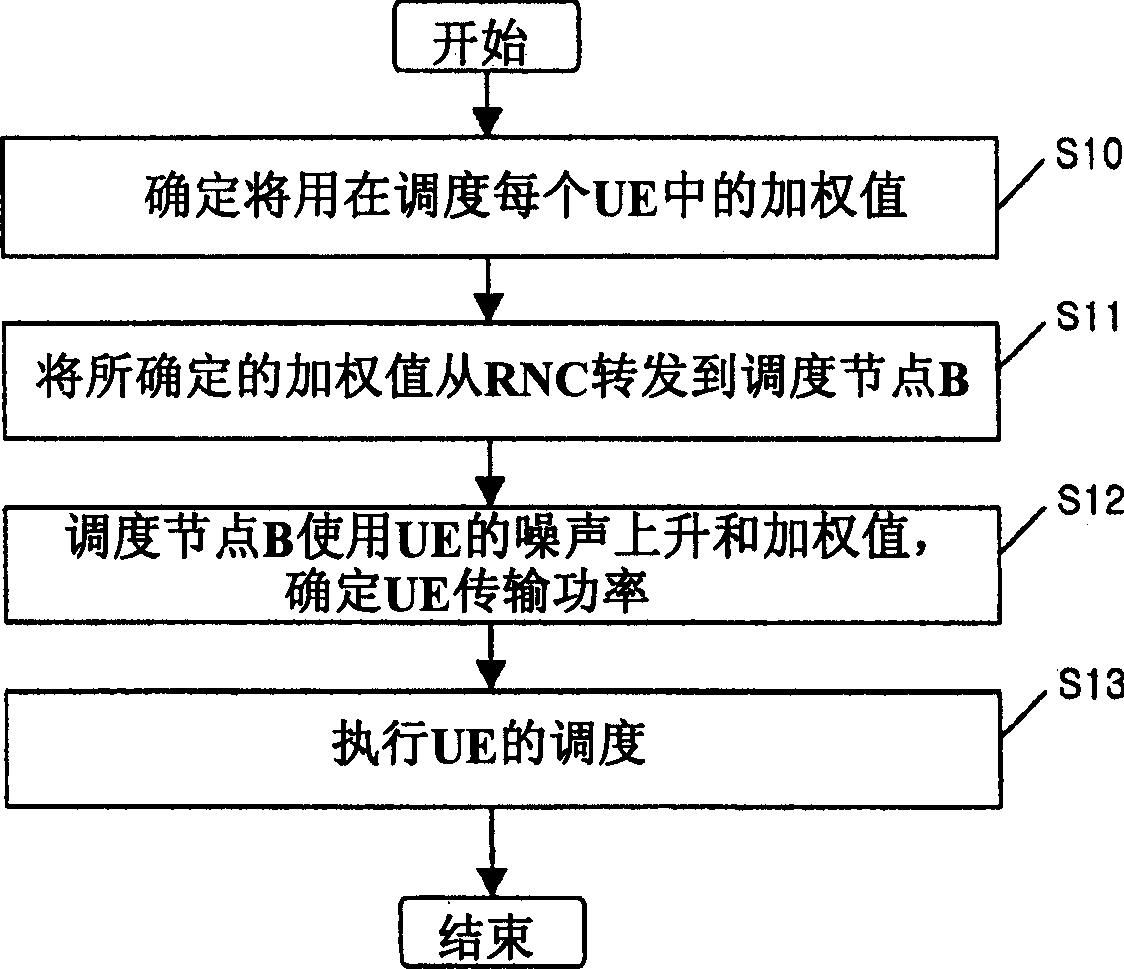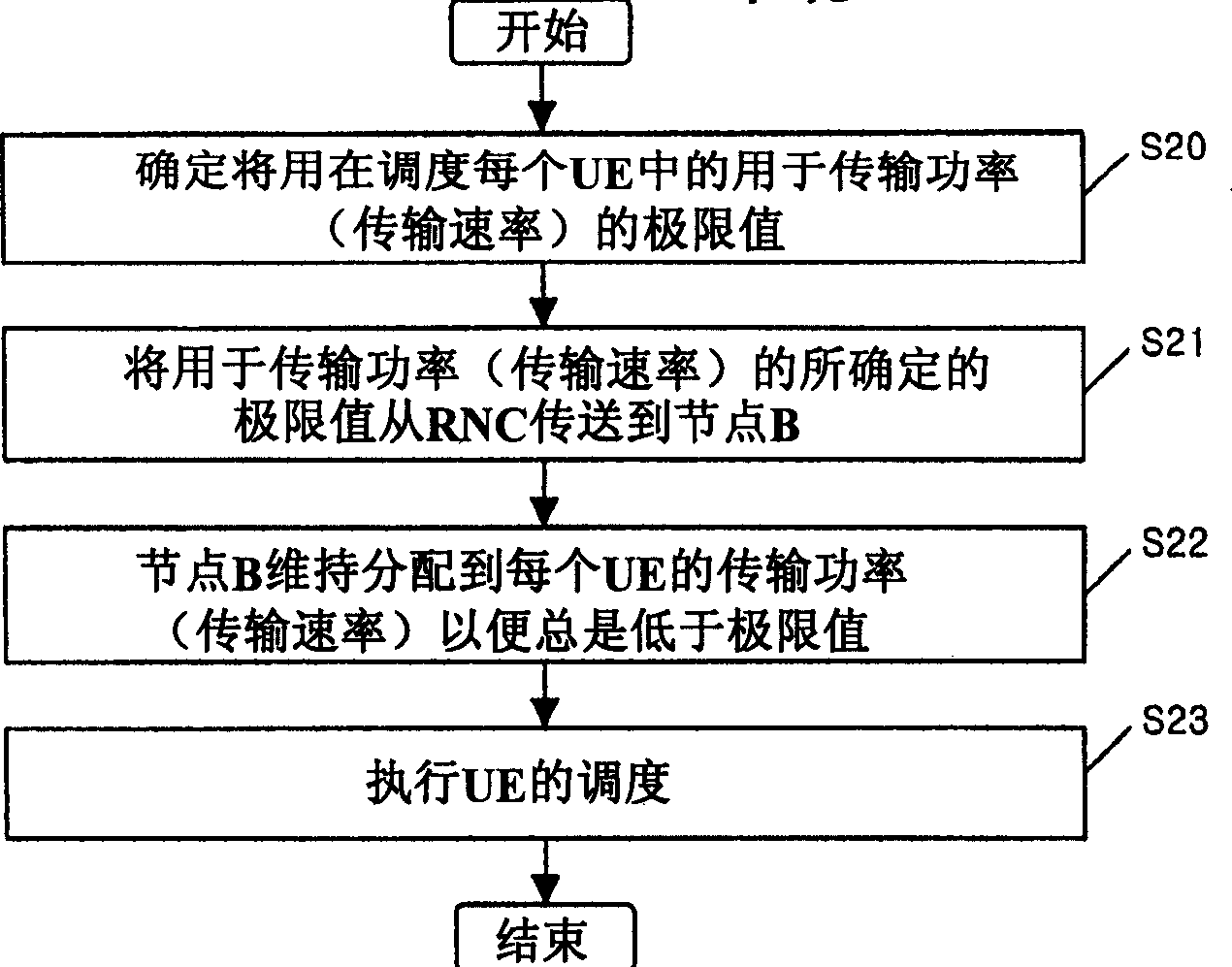Node B scheduling method for mobile communication system
A node, non-scheduling technology, applied in wireless communication, communication between multiple stations, power management, etc., can solve problems such as defects in Node B scheduling
- Summary
- Abstract
- Description
- Claims
- Application Information
AI Technical Summary
Problems solved by technology
Method used
Image
Examples
Embodiment Construction
[0022] Referring now to the drawings, wherein like numerals indicate like or corresponding parts throughout the several views, the present invention will be described.
[0023] Compared to the related art RNC uplink scheduling method, Node B scheduling allows the ability to control the uplink load amount by adjusting the transmission power / rate of the user equipment (UE). Thus, the Node B scheduler can operate to schedule Node Bs with a relatively small noise rise margin by minimizing changes in uplink loading. This results in increased cell capacity and cell coverage expansion.
[0024] Note that the noise rise margin is defined as follows. Each Node B has a noise rise limit. The noise rise is defined as the total noise received divided by the thermal noise. The noise rise margin is defined as the margin between the noise rise limit and the average noise rise. A smaller noise rise margin allows the communication system to provide eg greater capacity.
[0025] Although th...
PUM
 Login to View More
Login to View More Abstract
Description
Claims
Application Information
 Login to View More
Login to View More - R&D
- Intellectual Property
- Life Sciences
- Materials
- Tech Scout
- Unparalleled Data Quality
- Higher Quality Content
- 60% Fewer Hallucinations
Browse by: Latest US Patents, China's latest patents, Technical Efficacy Thesaurus, Application Domain, Technology Topic, Popular Technical Reports.
© 2025 PatSnap. All rights reserved.Legal|Privacy policy|Modern Slavery Act Transparency Statement|Sitemap|About US| Contact US: help@patsnap.com



